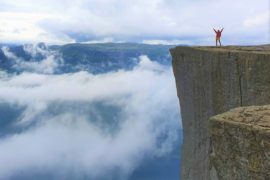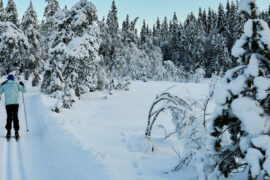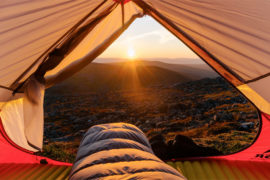Polar bears live in the countries bordering the Arctic Circle and while more than half the world’s polar bears can be found in Canada, they also inhabit the wilds of Greenland, Russia and the Svalbard archipelago.
These icy islands belong to Norway, but lie almost 900km to the north of the Norwegian mainland.
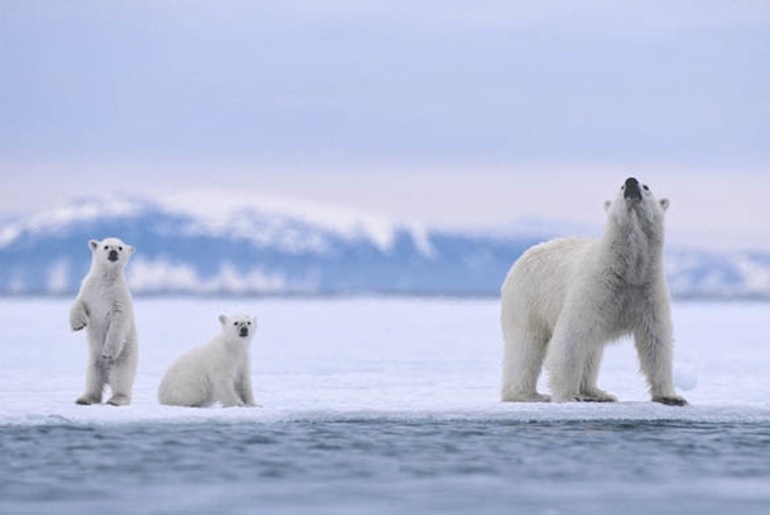
In winter, historically, Svalbard is nearly surrounded by sea ice that reaches down from the North Pole.
With deep snow on the mountainsides providing excellent protection for pregnant polar bears to build their dens, these desolate islands are a world-renowned denning site.
Additionally, Svalbard’s location on the edge of a continental shelf, with relatively shallow waters that readily freeze, has until now been great for bears as they rely on a platform of ice to hunt off.
The longer the ice lasts each year the better they feed. Unfortunately, due to global heating, the sea ice has been melting earlier and reforming later every decade around the globe since the 1980s.
As a result, polar bears are changing their behaviour and hunting patterns, with a few trying their luck along the shoreline instead.
In recent years, half a dozen bears have been seen around Isfjorden, Svalbard’s main fjord, not far from the capital Longyearbyen – not so long ago, bears were rare there in summer.
How likely am I to see a polar bear in Svalbard?
Around 2,650 polar bears roam the Barents Sea area surrounding Svalbard.
Andreas Umbreit, an expedition leader, says his personal sighting record is 38 bears during a 14-day cruise (his lowest is just three bears in 14 days) with an average of around 15 sightings over two weeks.
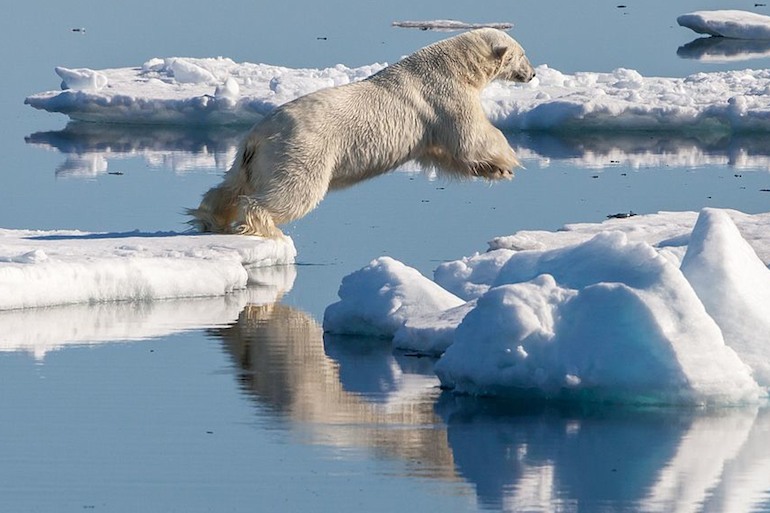
But there’s a polar bear code – you mustn’t actively chase bears, for instance, to get better pictures.
The Svalbard polar bears’ right to remain undisturbed comes first.
If you go with a local guide, active pursuit isn’t necessary, because they will know the bears’ habits and movements and will take you to places where you can see all kinds of Arctic bird- and wildlife and possibly bears too.
With patience and persistence the chances of seeing a polar bear are reasonably good, and if you go in with the mindset of soaking up the glistening fjords and perhaps seeing walrus, Arctic fox, Svalbard reindeer and whales, along with birds such as puffins, fulmars and petrels as well, you won’t be disappointed.
When is the best time to see polar bears in Svalbard?
In Norway, early summer is the best time for spotting polar bears in the wild.
Mothers bring cubs born in spring out of dens once they’re strong enough to follow her hungry amble over the sea ice in search of food after months of hibernation.
You may, if you’re lucky, also see bears hunting, patiently waiting for seals to surface at a breathing hole in the ice.
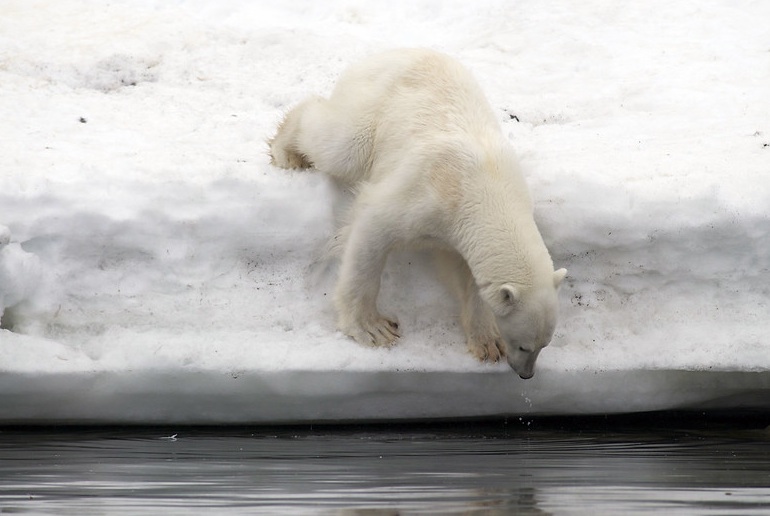
Is polar bear tracking dangerous?
Yes and no. You must go with a guide – you can’t even leave Longyearbyen (pop. 2,100) on your own without a rifle and flare guns to scare off curious bears.
If you don’t possess a firearm licence in your home country, you’ll need to get a licence from the Svalbard Governor’s Office – for details, visit sysselmannen.no.
But cruising the slate-grey waters of the archipelago dotted with ice floes on an organised tour and perhaps spotting bears on pack ice from afar is considered low risk.
You should keep your distance, though, right?
Most definitely. Hungry bears do occasionally scavenge for food around Longyearbyen, the world’s northernmost town.
In summer 2020, an unlucky camper was killed by a bear. In response, the campsite is installing electric bear fencing in 2021.
Although these kind of stories hit the news and make scary headlines, only five people have died in this area from a polar bear attack since 1971.
Bears know to avoid humans at Longyearbyen and there are people who have lived there their whole lives who have never even seen a bear.
You are not going to bump into one on your way to the supermarket.
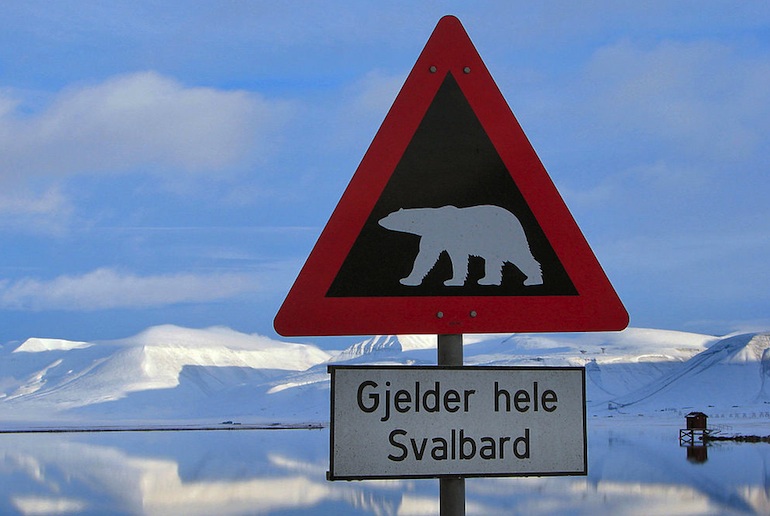
Taking a tour to see polar bears
Your best chance of seeing a bear is to take a tour led by local experts.
Our advice is to book early – ship-based tours are sometimes booked up a year in advance – and be flexible. The best tours deliberately don’t run to a specific itinerary so that they can respond to weather, ice conditions and reported wildlife sightings.
Land-based tours tend to be cheaper and are a good option for spotting a variety of wildlife and birdlife, with the small possibility of a bear sighting too.
Here are some options for operators and polar bear spotting tours that run during the summer.
Wilderness camping and cruises
Writer and expedition leader Andreas Umbreit has been organizing specialist polar travel tours since 1987 (he set up Svalbard’s first official tour operator when coal mining was the island’s main economic activity).
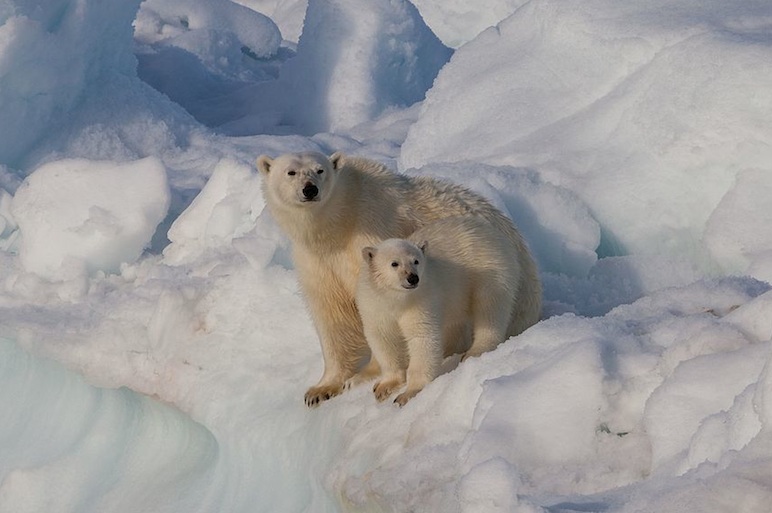
Now Terra Polaris runs bespoke general-interest and wildlife tours, including on small expedition cruise vessels or land-based mobile wilderness camps.
The company also runs Svalbard tours on behalf of household-name travel companies.
Glaciers and wildlife
Based in Longyearbyen, the small tour operator Poli Artici is owned and run by Stefano Poli who has lived on Svalbard since the 1990s.
Its tailor-made tours focus on areas rich in wildlife and with spectacular scenery.
Options range from a six-hour speedboat trip to visit the massive blue front of the Wahlenberg Glacier on Isfjord, to a seven- or ten-day voyage on a 62-ft vessel built for polar sailing which heads north in search of sea ice where there’s the highest likelihood of encountering polar bears.
Polar wildlife tours around Svalbard
Magnetic North is an expert in travel to Scandinavia and runs wildlife holidays in search of native species of the far North, including polar bears.
Their Circumvent Svalbard tour explores Svalbard on an ice-strengthened expedition ship with landings by Zodiac on smaller islands where possible.
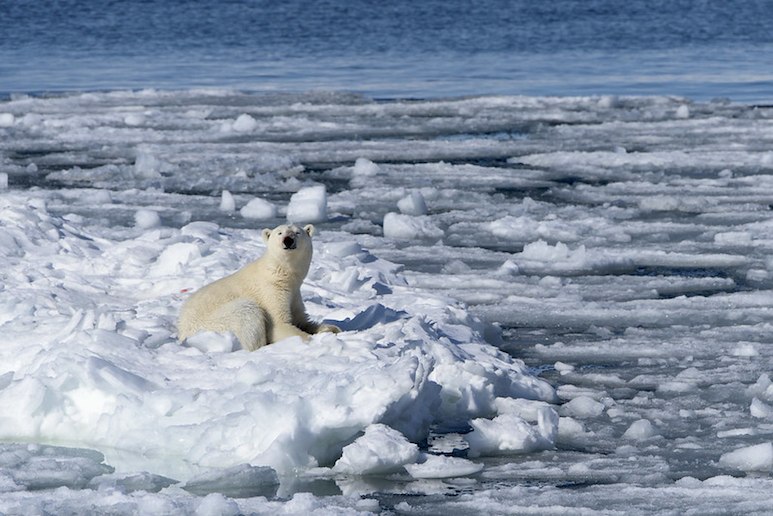
Polar bear expeditions
Responsible Travel’s wildlife cruises on a small expedition ship include Zodiac missions, expeditions on dry land – with optional Arctic dips thrown in – and the chance to search for native wildlife such as walruses, seals and whales. All the company’s tours exceed the region’s environmental protocols.
Check out their Polar Bear Watching Cruise and Polar Bear Explorer accompanied by an expert naturalist; some trips include specialist-led photography expeditions.
In search of polar bears and pack ice, plus the Lofoten islands
This polar bear trip includes two nights in the Lofoten islands and one night in Tromso before a short flight to Longyearbyen to join M/V Hondius, the first-registered Polar Class 6 vessel in the world, for a seven-night polar cruise with stops at the Seven Islands and the massive Monaco glacier. In previous years, departures have taken place in May and July.
Svalbard adventure
This three-night activity-packed trip includes a snowmobile safari, dog-sledding and visits to Svalbard’s unique global seed vault and its former coal mines.
Wildlife sightings aren’t guaranteed but you may be lucky and see some native animals en route, including reindeer and Arctic foxes.
See also:
Visiting Svalbard: the ultimate guide
8 wildlife tours in Norway you just shouldn’t miss
9 amazing islands in Northern Norway


